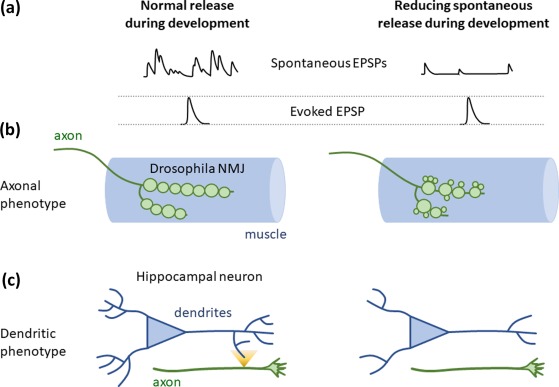Figure 1.

Spontaneous release is important for axonal and dendritic development. A. Neurons undergo both spontaneous and evoked release during development (traces on the left) and tools can be used to selectively interfere with spontaneous release (traces on the right). B. At the Drosophila neuromuscular junction (NMJ), interfering with spontaneous neurotransmitter release, but not evoked release, during the period of synaptogenesis causes the formation of aberrant presynaptic terminal boutons. These are mainly observed as an increased number of small presynaptic boutons and a decrease in overall synaptic terminal area. C. In mammalian hippocampal neurons, where release from developing axons occurs predominantly in a spontaneous manner and activates dendritic NMDA receptors (yellow event), interfering with NMDAR activity driven by spontaneous release results in less complex dendritic arbors
